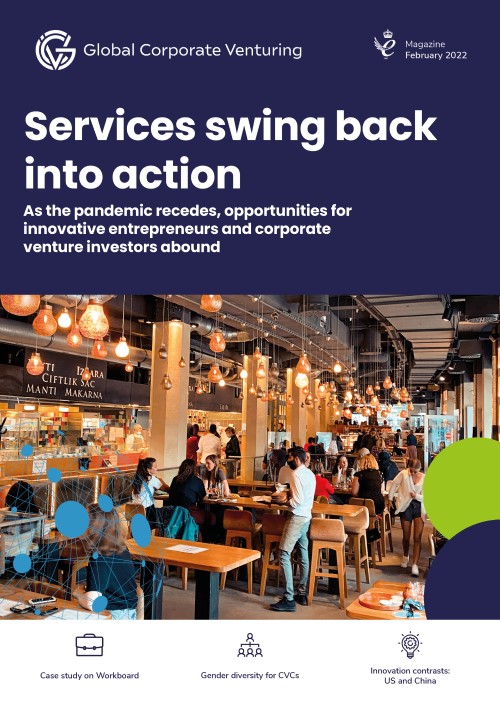Corporate venture capital (CVC) teams are responsible for 24% of all venture capital investment, accelerating hundreds of startups a year. Yet CVC teams are potentially missing out on investment opportunities by not doing more to actively seek out and support women entrepreneurs with bankable projects.
Most conversations about improving diversity in venture capital focus on generic steps that any investor could take – such as adopting standardised interview questionnaires, scorecards and metrics – rather than on corporates specifically.
Women founders currently face serious challenges in accessing venture capital. In the US, all-women founder teams received only 1.9% of venture capital in the first three quarters of 2021, down from 2.2% in 2020. In the EU, that figure was just 0.7%, also down from 2.2% in 2020. The covid-19 pandemic is likely having an impact on these trends, as it has on women in work more widely.
The lack of investment in women means many opportunities are being missed. Over a five-year period, for every dollar of venture capital invested, women-led or co-led startups generated 78 cents of revenue compared to 31 cents for startups led by men only. On average, companies with more diverse leadership teams report almost 20% higher revenue from innovation.
Unconscious bias against women entrepreneurs
Research on the gender gap in tech and VC finds that many biased decisions are made unconsciously. For example, most VC funding has historically gone to all-male founding teams, which means men feature more prominently than women in media coverage about IPOs and unicorn status. When looking at potential investments, investors may, therefore, subconsciously assume that male entrepreneurs are more likely to enjoy positive outcomes and higher returns.
This is less likely to happen if the investors themselves are women. However, according to research in 2019, just 3.4% of assets under management were held by women-founded VC firms – another manifestation of the opportunity gap.
Rather than try to change individuals, research finds it is more impactful to create an environment, initiatives, metrics and guidelines that limit the scope for such unconscious biases to manifest themselves. This means investing in solutions that limit the influence of bias in decision making and equipping decision makers with tools to notice and act on bias-prone contexts or processes.
Our project built on more general research – notably the Women and Public Policy Program at Harvard Kennedy School’s project Advancing Gender Equality in Venture Capital – and focused specifically on how corporate VC can close the opportunity gap. Two main ideas emerged from our interviews, surveys and expert workshop. A full list of identified actions is presented in the infographic above.
Improve opportunities for women entrepreneurs through non-financial investment
Access to revenue and an ability to scale quickly are the two key factors that enable entrepreneurs to succeed and access more funding for further growth. Beyond financial investment, corporate venturing teams are uniquely positioned to help in two ways: accelerating the timeline to a viable product, and connecting the startup to customers and suppliers.
If corporates invest in entrepreneurs whose products complement their offerings, they can then partner on product development. Through their corporate partner, entrepreneurs gain access to market intelligence, design, testing and strategy resources they would not be able to hire on their own. When the time is right, the corporate team can also assist with pilots or beta testing.
Getting the product right is just one part of the equation. The right pricing, packaging and go-to-market strategy are also critical. Corporates can assist entrepreneurs with price modeling and assistance navigating the regulatory landscape.
When the product is ready for market, corporate venturing teams can offer additional support by connecting the entrepreneur to their vast customer and supplier networks – at a minimum, providing introductions, offering guidance for negotiations and helping to close deals. To maximise their impact, corporations can:
- Include the entrepreneur’s products in their sales plays;
- Incentivise sales teams to sell the entrepreneur’s products;
- Run joint marketing and advertising campaigns;
- Feature success stories and testimonials for the entrepreneur’s products via their communication and marketing channels;
- Purchase from the entrepreneur’s company and include them in their supplier diversity programme;
- Endorse the entrepreneur’s products; and
- Simplify access to becoming a supplier to their company and to others.
Even from a mentoring standpoint, corporates can offer access to unique resources, effectively augmenting the entrepreneur’s staff by providing access to legal, financial, and other business expertise as needed. Specifically, corporate venturing teams can set up mentorship programmes for women seeking funding; provide coaching on how to pitch and fundraise; and make introductions to internal and external advisors.
Grow pipeline of women entrepreneurs with skills to serve on investment teams
Corporates should:
- Get more women interested in being part of investment teams as a career opportunity (for example internship, venture scout and rotation programmes);
- Improve the experience of women who are already part of investment teams (for example mentorship, increasing networking opportunities);
- Increase leadership opportunities for women in investment teams (for example executive sponsorship, transparency on roles and opportunities, training).
According to research by Atomico, 36% of VCs have not introduced quantifiable targets on diversity. Our research found this issue to be even more widespread among corporate VCs: 70% of corporate VCs who responded to our survey indicated that “Diversity is important but we do not have specific targets”.
It is clear much remains to be done to tap the potential of corporate venture capital to close the opportunity gap for women entrepreneurs.










